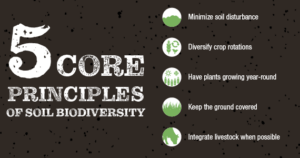When it comes to crop protection, making the best choices is tough — especially when every cent counts. Bundle programs that add crop protection products to seed purchases are tempting, but these deals limit input options throughout the season and prevent growers from choosing the best solutions for their unique challenges. With slim profit margins in mind, it is more important than ever to prioritize the right inputs over initial savings.
Successful growers consider crop protection to be an investment, rather than a negotiable expense. Disease, stress and pest pressure decrease yield potential from the moment planting begins. Combining the highest quality solutions for challenges on individual operations with sound agronomic practices is the best way to protect yield potential.
The Better Yield is the Better Deal™ platform from Syngenta offers a wide variety of industry-leading products designed to help growers maximize their yields and return-on-investment potential. The platform provides growers with the flexibility to choose the best products for their fields.
Maximizing yields from every acre is the best way to achieve the greatest return on investment. Adopting the Better Yield is the Better Deal mindset and prioritizing investing in quality inputs helps growers set up their crops for immediate success and their operations for long-term gains.
In many cases, selecting the best products based on individual farm fit and unique challenges means choosing a complementary product pair. For soybeans, Syngenta recommends Tendovo® herbicide followed by Miravis® Neo fungicide for maximum yield protection. This combination outyielded the competition by 12.2 bushels per acre1 in a replicated Nebraska trial. This equates to a nearly $16,000* increase in profit potential for every 100 acres.
Growers can’t save their way to a higher return on investment. Focusing on making the best investments results in better, more consistent outcomes. When planning for the growing season, farmers should remember that Better Yield is the Better Deal.
1 Syngenta Trial 2021 ― H080SMAD-2021US ― NE (1). Use rates: Tendovo 1.75 qt/A followed by Sequence® 3 pt/A + Flexstar® 1 pt/A and Fusilade® DX 6 fl. oz/A. Miravis Neo 13.7 fl. oz/A and Endigo® ZCX 3.5 fl. oz/A.
*Revenue calculations based on soybean commodity price of $13/bu. Potential revenue in dollars for every 100 acres applied = yield advantage per product combination x $13 soybean commodity price x 100 acres. Calculations are not a guarantee of similar results.






